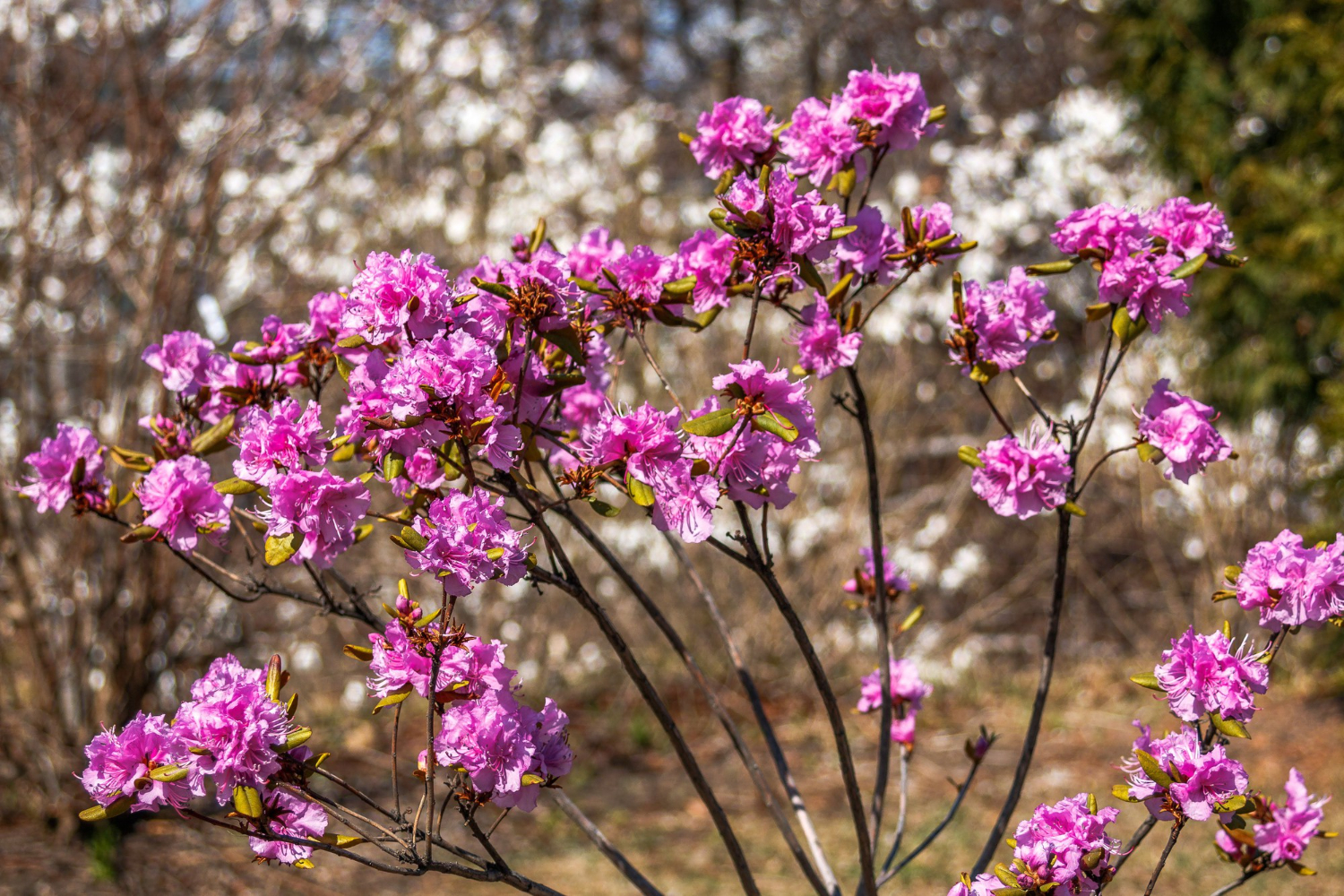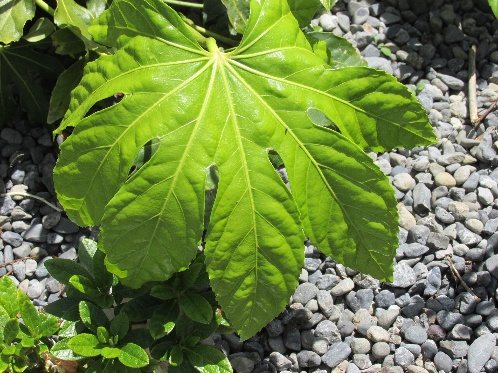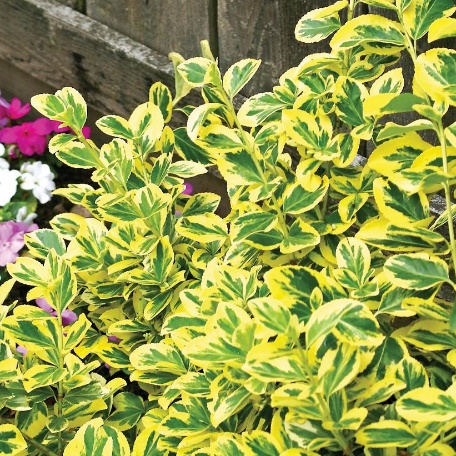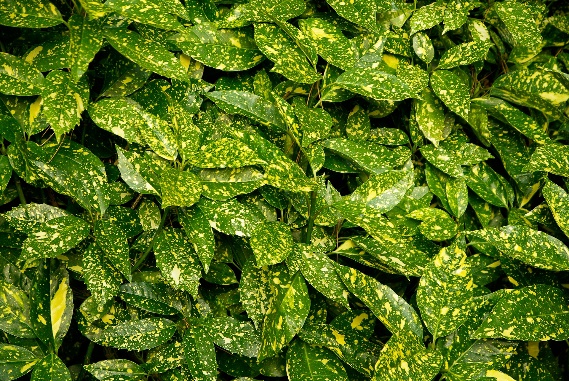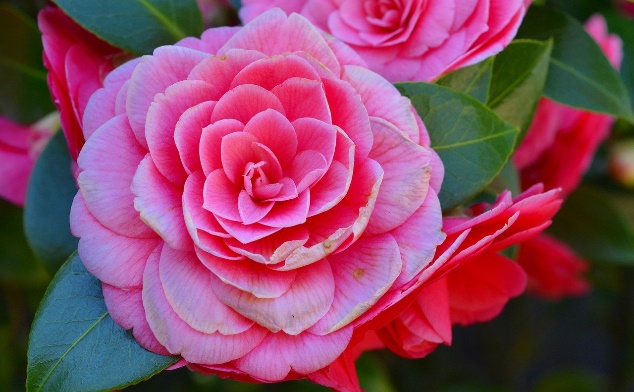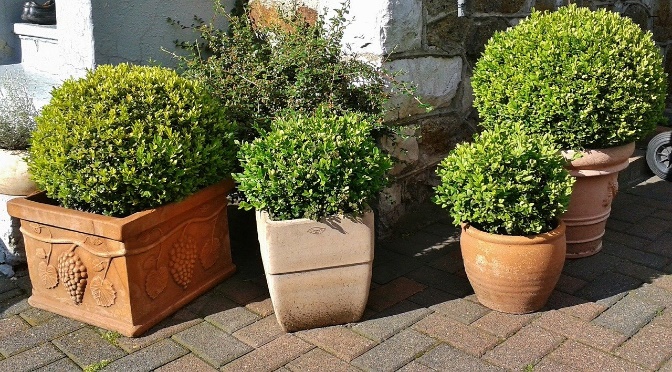Evergreen shrubs are perfect to create hedges because they protect your privacy 365 days a year.
For instance, yews are a needle-bearing evergreen shrub ideal for borders as you can easily trim them into any shape. Checkout the hedge trimming safety guideline here.
Similarly, Boxwood is a variety of broadleaf evergreen shrubs, which can work as rectangular fences around your garden.
There are many other evergreen shrubs that you can plant in your garden. We are mentioning the 12 most popular options here.
- Rhododendron (Rhododenron Spp.)
Broadleaf evergreen shrub, rhododendron retain green and then bronze foliage throughout the winters. It is a versatile plant that you can use as a specimen within a group of shrub islands.
This is also a suitable shrub for woodland gardens, or foundation plantation.
However, you cannot use this plant in hedges because of its loose and airy growth.
Rhododendron and Azaleas come from the same genus. Hence, you might not be able to differentiate between these two plants.
Rhododendron is a comparatively larger shrub than azaleas.
Plus, the former has large-sized leaves as well. Azaleas flowers are generally built using five stamens, but Rhododendron flowers have 10.
- USDA Growing Zones: 3 to 9, depending upon the variety
- Available colours: Pink, red, white, rose, lavender
- Sunlight requirements: Partially shaded
- Preferred soil: Well-drained, rich, acidic, humusy
- Fatsia japonica
Grows up to 2.5 meters, Fatsia japonica has exotic hand-shaped leaves born in upright stems. These are vigorous plants that can quickly recover even if you don’t maintain them properly.
Keep in mind that Fatsia cannot thrive under full sunlight. So, plant them at a shaded spot.
Originated from Korea and Japan, Fatsia produces white flowers in autumn, which is October and November.
You can grow this evergreen shrub outdoors in courtyards and cool greenhouses. You will like the fact that these evergreen shrubs survive in any condition.
- USDA Growing Zones: 8 to 10
- Available colours: Gray
- Sunlight requirements: Partially shaded
- Preferred soil: Clay or sandy, but not dry
- Emerald’ n’ Gold’ Wintercreeper (Euonymus Fortunei’ Emerald ‘n’ Gold’)
A variety of broadleaf evergreen shrubs, Emerald’ n’ Gold’ Wintercreeper is preferred by many gardeners because of its variegated leaves. Its foliage has golden borders and green centres, which looks great, especially when planted along a walkway.
The this-low growing shrub has a maximum height of 4 feet, but generally, they stop at 2 feet.
Wintercreeper is a versatile plantation for both shaded spots and areas that receives full sunlight. Provide a low wall if you want these greens to climb. In the fall, their leaves turn pinkish-red, which makes your garden look even more beautiful.
- USDA Growing Zones: 5 to 8
- Available colours: Insignificant flowers, foliage is green with golden boundaries
- Sunlight requirements: Can grow well in full sunlight and partially shaded spots
- Preferred soil: Well-drained soil with a medium level of moisture
- Lavender
Do you love fragrant flowers? Try lavender, which is a versatile shrub that blooms in shades of pink and purple.
It works as hedges or garden borders and also looks attractive in patio containers.
Lavender invites a lot of butterflies and bees. Apart from that, this shrub has significant drought tolerance because of its Mediterranean origins.
Plus, this plant also grows well in sandy or light soils.
- USDA Growing Zones: 5 to 9, depending upon the variety
- Available colours: Blue, grey and pale lavender
- Sunlight requirments: Lavender needs at least 8 hours of direct sunlight every day but can survive indoors during winters
- Preferred soil: Well-drained, neutral and little alkaline soil
- Eastern Hemlock (Tsuga canadensis)
Canadian Hemlock or eastern hemlock is a coniferous evergreen that grows with small needle-like leaves. Most of these shrubs are large and lengthen up to 70 feet. You might like the fact that this species can survive without any problem in shady conditions.
Some of the eastern hemlocks are compact and acts as shrubs. If you want to create a dense wall, then trim these privacy screens regularly. These plants grow best in cool climates. But, they might struggle in the south of zone 6.
Check the presence of hemlock woolly adelgid (HWA) in your region before planting eastern hemlock. It’s a tiny sap-absorbing insect that’s threatening to hemlocks. Try other hemlock species if HWA is a problem in your living area.
- USDA Growing Zones: 3 to 7
- Available colours: Medium-green
- Sunlight requirements: Full shade to partial
- Preferred soil: Well-drained with medium moisture
- Aucuba
A resilient shrub, Aucubas evergreen plants are famous because they can withstand dry soils, salty conditions, pollution and full shade.
These shrubs are available with plain leaves, but gardeners prefer speckled yellow cultivars. Thanks to Aucuba’s large, glossy and leathery leaves, it’s perfect if you want a tropical look in your garden.
Female plants generate bright red berries in autumn. But, it’s only possible if there is a male plant nearby. Consider Aucuba as a specimen plant for hedges or shaded areas of your garden. Such an arrangement makes a pleasing contrast to other foliage flowers and plants.
- USDA Growing Zones: 7 to 9
- Available colours: Female grows with yellow flecked or dark green leaves with golden yellow centres. Male plants are available with dark green leaves.
- Sunlight requirements: Partial to full shade
- Preferred soil: Well-drained moist soil with lots of organic contents. But, these shrubs can deal with any soil type, including the heavy clay ones.
- Golden Mop’ FalseCypress (Chamaecyparis pisifera Golden Mop)
Easy to recognize because of its fanciful golden foliage, Golden Mop’ is a false cypress. This needled shrub is evergreen, but it has awl shaped needles instead of classic sharp ones.
Golden Mop is a mounded shrub variant of C. pisifera species, which needs around ten years to reach its maximum growth and height of 10 feet.
Its whip-like stringy branches look great in specimen and foundation planting. This shrub is also perfect for rock gardens.
- USDA Growing Zones: 5 to 7
- Available colours: Golden-yellow
- Sunlight requirements: Partial to full shade
- Preferred soil: Rich and well-drained soil with proper moisture
- Camellia sasanqua
A native of Asia, Camellia is a shrub that flowers in the spring season. These shrubs are popular because of their deep green foliage that appears glossy and classic.
Moreover, this plant welcomes the new year by producing a significant amount of flowers. These florets can be single or double and are available in multiple colours varying from red to yellow or white.
Camellia sasanqua is a tall shrub, but its dwarf versions are also available. This elegant plant is ideal for creating plantation schemes and works excellent as a specimen shrub in hedges.
You can also use it in patio containers or a woodland garden with partial shade.
If you plan to grow Camellia in a container, fill it with a mixture of soil-based and ericaceous compost.
- USDA Growing Zones: 8
- Available colours: Pink, red and white
- Sunlight requirments: Full or partial, depending upon the variety
- Preferred soil: Well-drained soil with little acidic contents. 6.0 to 6.5 pH is best, but these shrubs can withstand lower pH as well.
- Boxwood (Buxus spp. and Hybrids)
Perfect for formal hedges, Boxwood is an evergreen shrub that grows with small foliage.
Gardeners prefer this plant because of its dense growth, which is easy to maintain using a hedge trimmer or hand shears.
So, try Boxwood if you want to create some low hedges in your garden. It’s also useful for foundation plantations.
Boxwood is a slow-growing shrub that grows around 5 feet but sometimes crosses this length. This is an evergreen shrub, but still, harsh winter winds are disturbing for it.
Boxwood leaves can convert bronze than fall off in the colder months.
- USDA Growing Zones: 4 to 9, depending upon the variety
- Available colours: Light or medium green foliage. Deep green and yellow are also present.
- Sunlight requirments: Partial to full sun.
- Preferred soil: Well-drained, moist and loamy
Also read: What is The Proper Way To Trim a Hedge?
- Mahonia
Famous for their late winter and spring florets, mahonia plants grow with spiny and glossy leaves. Its yellow flowers are highly fragrant. You will like the florets because they grow in clusters at the tip of their branches. Such arrangement makes mahonia attractive, elegant and unique.
If you want a low-maintenance evergreen shrub, then try mahonia. It grows well in clay soils, coastal conditions, and heavy shade. So, this plant could be a service-free addition to your hedges, borders and woodland garden.
- USDA Growing Zones: 5 to 9
- Available colours: Bright yellow
- Sunlight requirments: Full sun if watered adequately, partial sun and shade depending upon the species
- Preferred soil: Sandy, loamy, clay and high clay soils. Talking about the pH levels, these shrubs prefer acid, neutral and alkaline soils.
- Blue Holly (Ilex × meserveae)
A broadleaf evergreen shrub, Blue Holly generally grows up to 6 to 8 feet but sometimes reaches 15 feet. Its older leaves grow dark green. Plus, the stem and branches are also green.
Blue Princess is the most preferred Blue Holly cultivator. It’s a female variant, which needs a Blue Price to produce berries and flowers. Blue Holly is a versatile shrub, perfect for foundation plantation, hedges, screens and garden borders. Remember that this shrub might not be a trustworthy evergreen shrub in zone 5 unless you place it into a shaded area.
- USDA Growing Zones: 5 to 8
- Available colours: Dark green with a hint of blue, red berries grow through the winters, but its white flowers are insignificant
- Sunlight requirments: Partial to full sun.
- Preferred soil: Well-drained, moist, and slightly acidic soil is perfect for Blue Holly, but it can grow well on any soil
- Arborvitae (Arborvitae occidentalis)
Multiple cultivars of Arborvitae occidentalis are usually available as Arborvitae. It’s a group of shrubs, which grows needles like foliage arranged flat that looks similar to scales. So, this shrub is very different from other evergreen needled variants.
Arborvitae is similar to cedar, which belongs to Cedrus that’ a different genus. Arborvitae occidentalis is also known as eastern white cedar, but it’s not a cedar.
Arborvitae occidentalis is small to medium-sized shrub that grows up to 50 feet. But, some of its cultivators don’t grow more than 14 feet. For instance, the maximum height of ‘Emerald Green’ is 12 to 14 feet. Similarly, Pendula grows up to 10 feet. Golden Globe is a dwarf cultivar that achieves a maximum height of mere 3 feet. Danica is a unique variant that looks like a globe and grows up to 2 feet.
Arborvitae is a versatile evergreen shrub that’s useful for a variety of purposes depending upon its cultivar. You can use these shrubs as shade trees, privacy hedges, and screens. They are also great for foundation planting.
- USDA Growing Zones: 2 to 7, depending upon the version
- Available colours: Yellow cum green to dark green
- Sunlight requirments: Partial and full sun
- Preferred soil: Well-drained soil with medium moisture levels. Can grow well in poor conditions
Also read: How Do You Maintain a Healthy Hedge?
Winter protection tips for evergreen shrubs
In winters, cold wind and sunrays can wither or parch the foliage of all the broadleaf evergreen shrubs because the soil is frozen, which stops water intake. Also, heavy snow can break weak branches and stems. Follow the given tips to protect your shrubs from winter damages.
- Delicate shrubs like rhododendrons cannot survive in harsh winter winds and strong sun rays, especially in the afternoon. So, plant such evergreen shrubs in spots that’s safe from these two factors.
- Water the shrubs before the frost. So that they can have a sufficient amount of moisture to survive the winters. It’s better to add a mulch layer, which conserves moisture for a long time.
- Shrubs with floppy or weak branches are prone to damage. So, protect such plants using covers that are specially designed to protect these greens.
- Use stakes and burlap to build a temporary windbreak. Such structures can protect multiple bushes if planted side by side.
- Bind the upright branches of shrubs using a twine to protect them from snow collection. For instance, you can easily bind boxwood branches, preventing any snow collection on the top. Take out the string in the early springs.

